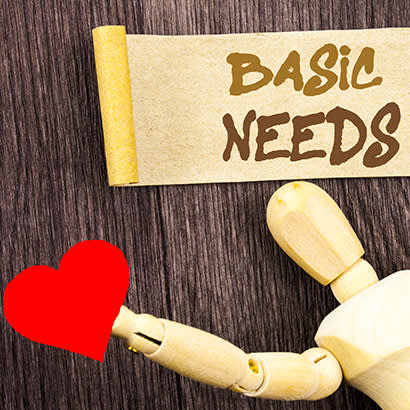
For an enhanced digital experience, read this story in the ezine.
How and why to change your approach to recreational programming
As recreation programmers, we often think about our populations in terms of demographic measures (e.g., age, economic status, ethnicity, education, etc). But what if we approached programming based on the needs of the community? How would it affect programming? Could this shift in perspective build innovative programming, lifelong patrons and stronger communities?
Nearly 80 years ago, Abraham Maslow wrote a paper on the theory of human motivation that is still being actively used today in education, healthcare, social work and more. Maslow proposes that there are five categories that dictate an individual’s motivation, and that the needs in each category must be met before they can move on to the next. For example, basic needs — such as food, water and shelter — must be met before a sense of security can be felt. Maslow’s categories start with basic needs (food and safety) and move upward to psychological needs (belonging and esteem), and finally growth needs (self-actualization).
As with any theory, there is debate for and against this one. The debate against is largely that even individuals struggling to meet their basic needs still seek out a sense of belonging, love, accomplishment, etc. And while there is disagreement about a singular upward climb, it is agreed that these categories encompass the motivations and needs of humans, and that having those needs met or left unmet moves an individual back and forth between these categories.
Over the past few years during the coronavirus (COVID-19) pandemic, we as recreation programmers have seen the great flux between the categories. People got sick, became caretakers, were isolated and lost their jobs. We struggled to develop programs that created or maintained a sense of belonging and accomplishment — for our patrons and, sometimes, for ourselves.
In the past, for the most part, recreation sat firmly within the psychological needs that Maslow describes as the belongingness and love needs and esteem needs. This is what we do, and we do it well — we build leagues where championships are won, develop programs where lifelong friendships are made, and create events that are inclusive of the community. However, with such fluctuations in recent years, it would be advantageous to use these categories to more consciously create programming for our communities.
The key to this is to evaluate your community and/or reference available studies for your locale. Where is the community, as a whole, on the hierarchy? Does your community have access and are their basic needs being met? Is the community thriving, or is there a lack of available housing? Are there jobs or homelessness? Is there access to healthy foods or is it a food desert? These types of questions identify gaps in basic needs being met. Where are residents going to find that sense of belonging — other recreation programs, religious institutes, schools, bars, etc.? Is it the same around the facility or parks you serve? And finally, are there opportunities for self-actualization, even if recreation is not providing it?
Once you’ve identified gaps in basic needs, belonging and esteem, and opportunities for self-actualization, identify where your recreational programming fits in. Where does your mission and vision fit in the hierarchy? Are you meeting the needs that have been identified from your community assessment, and that of your mission and vision? Start there; you’ll find programming ideas come easier when there is a purpose behind it. Some examples include:
- A program shifts from being a weekend soccer league to a weekend soccer league that holds a farmer’s market at the same place (that accepts Electronic Benefits Transfer and Supplemental Nutrition Assistance Program at all their stalls).
- Create a program specifically for new residents to learn more about the resources in your community. Hold it in different languages, if needed.
These kinds of thoughtful shifts bridge gaps between the levels in the hierarchy and put specific meaning and intent into your programming. You know your community; you know what will work. Creating innovative programs that flow to serve the needs of the community not only will build trust with the community, but also will serve to create a sense of belonging for your patrons wherever they happen to be on the hierarchy, building lifelong patrons and a stronger community.
Christy Famolare is a Freelance Writer with 20 years of experience in community engagement and 15 years’ experience in parks and recreation.

